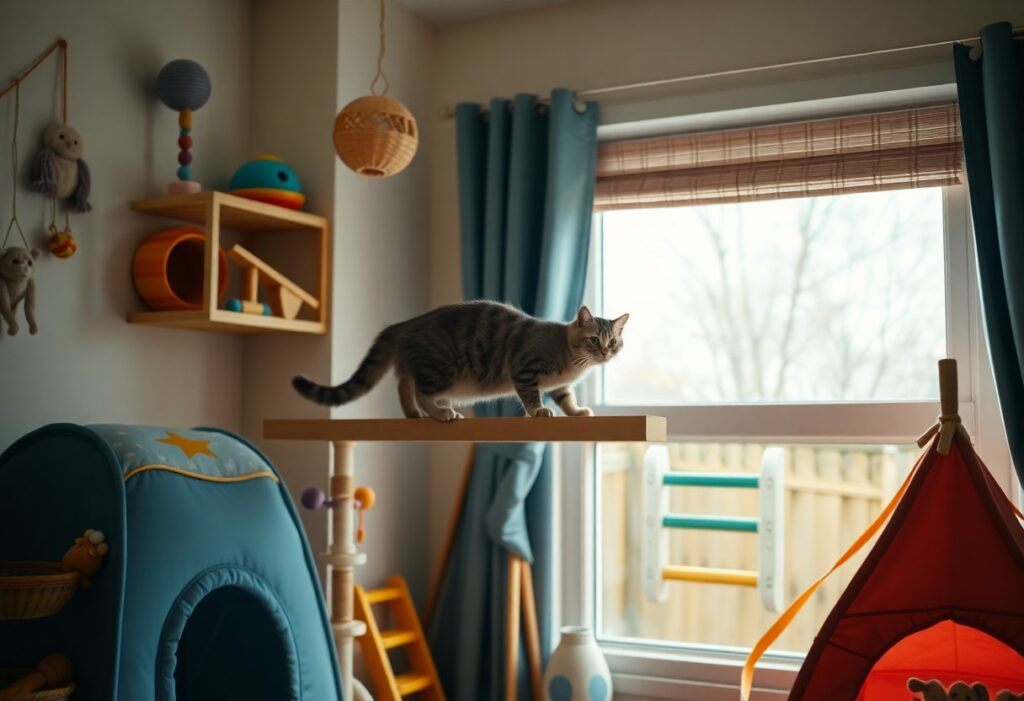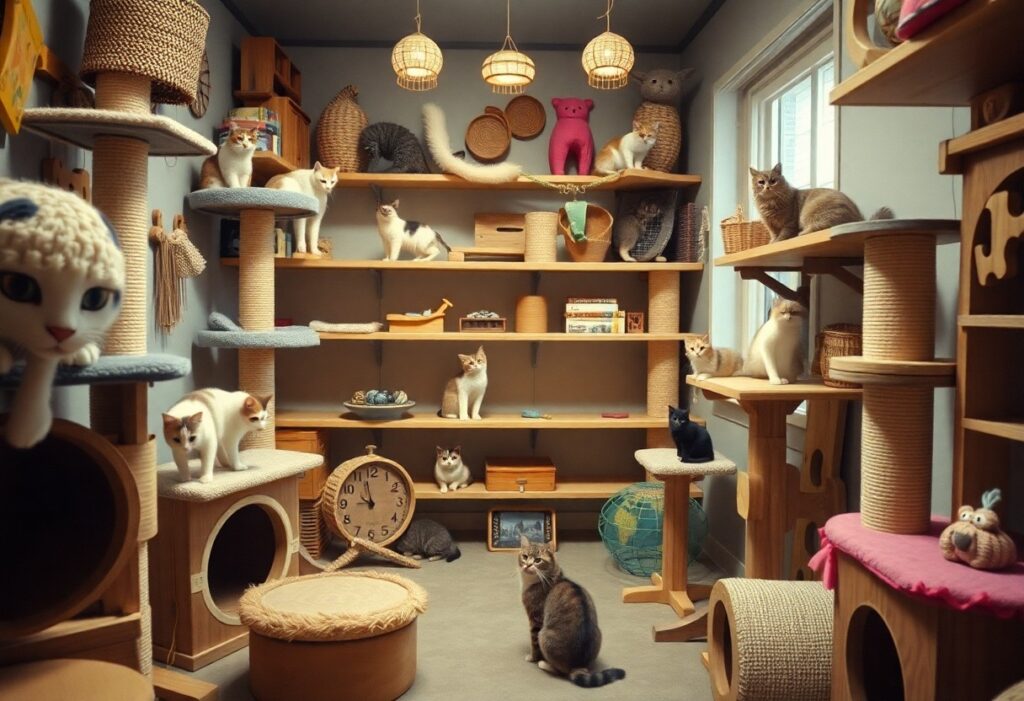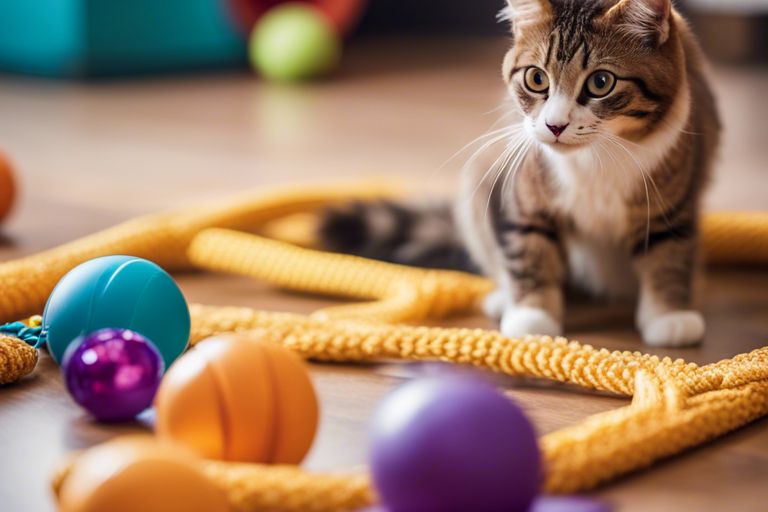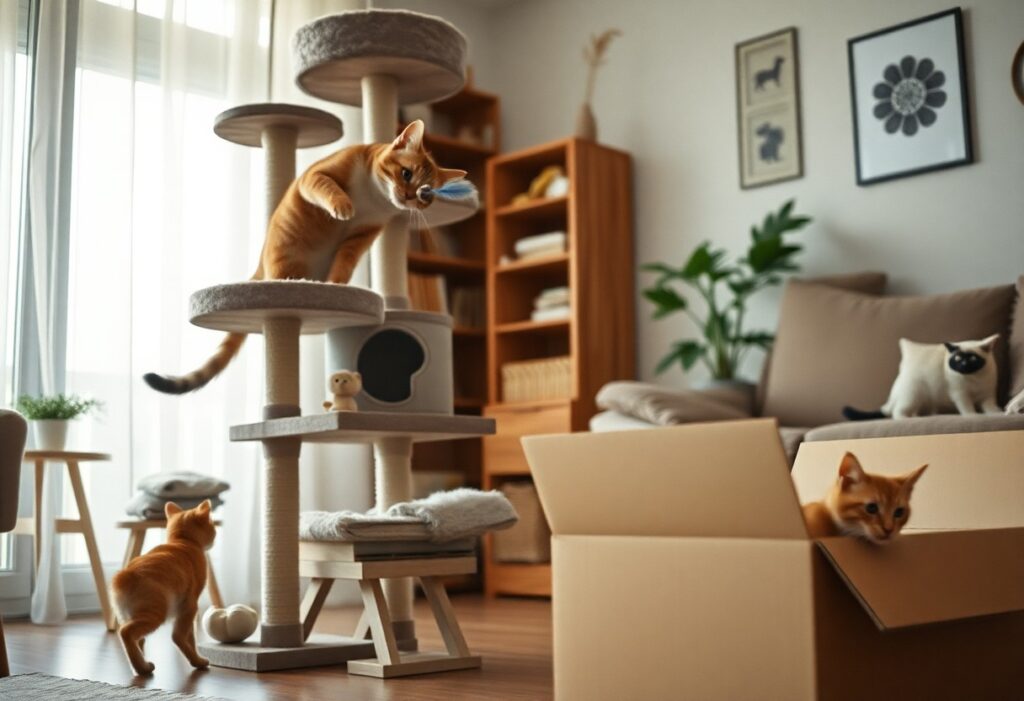Many cat owners face the challenge of keeping their shy cats entertained indoors. Finding unique activities tailored to your feline’s personality can boost their confidence and enhance your bond. In this guide, you’ll explore various engaging ideas that cater to your cat’s timid nature while ensuring their safety and well-being. From interactive toys to creative playtime routines, you’ll learn how to transform your home into a stimulating environment that encourages even the most reserved cats to come out of their shells.
Key Takeaways:
- Observe your cat’s natural behaviors and preferences to tailor activities that align with their interests, such as interactive toys or hiding places.
- Incorporate low-stress environments with gentle sounds and cozy spots to encourage exploration and play without overwhelming your shy cat.
- Experiment with different types of enrichment, such as puzzle feeders, feather wands, or cardboard boxes, to discover what captivates their attention the most.
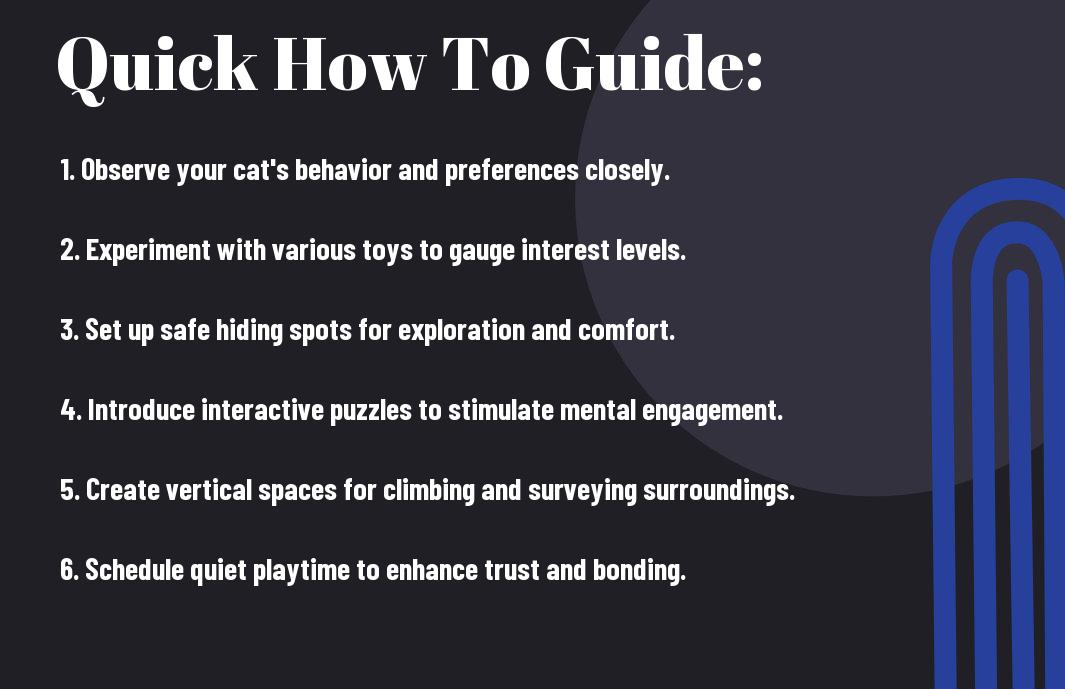
How to Recognize Your Cat’s Unique Personality
Your cat’s personality is as distinctive as its appearance. By closely observing your feline friend, you can uncover their quirks, preferences, and behaviors that define their individuality. This understanding can help you tailor indoor activities that cater specifically to your cat’s needs, ensuring a happy and engaging environment at home.
Identifying Signs of Shyness
Some cats display signs of shyness that can include hiding, avoiding eye contact, or hesitating to approach you. By identifying these behaviors, you can create a safe space for your shy cat, allowing them to feel more comfortable and secure in their environment. Look for patterns in how they respond to people and other pets, as this can provide insight into their level of comfort.
Understanding Behavioral Cues
Understanding your cat’s behavior is key to deciphering their personality. Shyness can manifest in various ways; for instance, a shy cat may exhibit low-energy behavior, preferring to stay in quiet areas or retreating when strangers visit. Look for signs such as tail tucking or flattened ears, which indicate discomfort. Conversely, if your shy cat engages in gentle play or slowly approaches you, it’s a positive sign that they’re beginning to trust you. The more you observe these behavioral cues, the better you’ll understand their unique personality and needs.
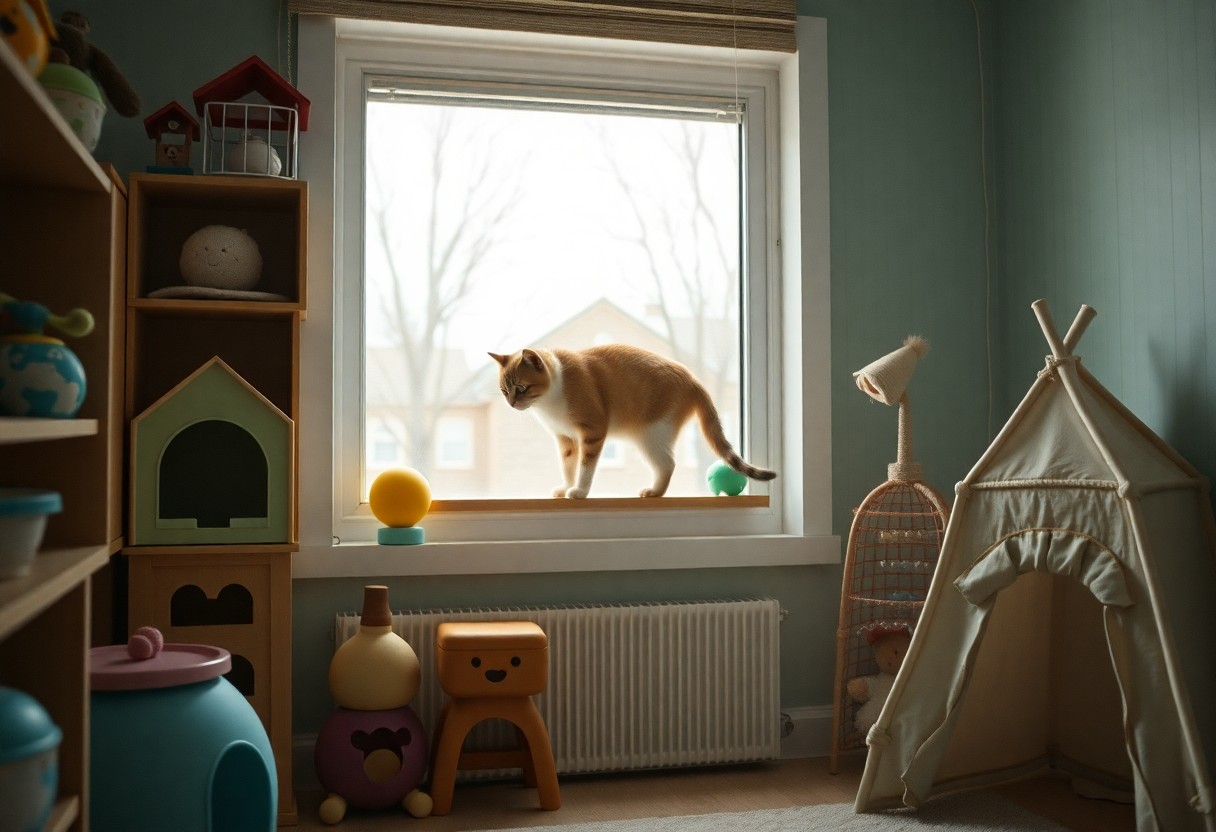
Tips for Creating a Safe and Stimulating Environment
The key to creating a safe and stimulating environment for your shy cat is to ensure it feels secure while providing various activities. Consider the following tips:
- Limit exposure to loud noises and sudden movements.
- Use soft lighting and calming colors.
- Provide elevated spaces or perches for exploration.
- Incorporate engaging toys and puzzles.
- Maintain a clean and organized living space.
Perceiving your home as a serene retreat will encourage your shy cat to engage and explore.
Choosing the Right Space
Choosing the right space for your shy cat involves identifying areas that offer both safety and stimulation. Designate quiet corners that are free from high foot traffic, allowing your cat to retreat when it feels overwhelmed. Additionally, using natural light can create a more inviting and warm environment that encourages your cat to explore.
Incorporating Hideaways and Comfort Zones
Zones dedicated to hideaways and comfort are crucial for your shy cat’s wellbeing. Providing hidey holes like cozy boxes or cat trees equipped with hammocks offers your cat a personal safe haven. These spaces not only serve as hiding spots but can also be places for napping and relaxation. You can enhance these areas with soft materials like blankets and catnip to further entice your cat to use them. Additionally, placing these zones near window views can stimulate curiosity and enable your cat to observe the outside world.
Plus, by ensuring your shy cat has multiple hideaways and comfort zones, you’re creating a safe environment that empowers your cat to explore at its own pace. It’s beneficial to keep these areas consistent and well-maintained so that your cat can develop a sense of territorial security. If you notice your cat gravitating towards particular spots, reinforce its use by adding enticing toys or a familiar blanket. This can help promote a sense of ownership and comfort, making your home an inviting and enriching habitat for your shy feline friend.
How to Introduce New Activities Gradually
Once again, introducing new activities for your shy cat should be done with care and patience. Begin by selecting a few activities that seem appealing and suit your cat’s personality. Present them slowly, allowing your feline friend to explore at their own pace. Create a positive environment by offering treats or praise when they engage in the activities, reinforcing their curiosity and reducing any anxiety associated with new experiences.
Starting with Low-Stress Options
While introducing new activities, it’s advisable to start with low-stress options your cat is likely to enjoy. Simple activities such as gentle play with a feather toy or interactive puzzles can be great choices. They encourage exploration and engagement without overwhelming your shy cat.
Monitoring Your Cat’s Reactions
The key to successful activity introduction lies in closely observing your cat’s reactions. Pay attention to their body language, vocalizations, and overall demeanor to gauge their comfort level. If you notice signs of stress, such as hiding, flattened ears, or hissing, it may be time to take a step back or try a different activity.
It’s important to create a positive experience for your cat. Look for signs of enjoyment, such as playfulness or curiosity, and respond positively to these moments. If your cat exhibits stressful behaviors, like retreating or swatting, stop the activity immediately and allow them space. Creating a safe atmosphere will help them build confidence over time and enhance their willingness to engage in new activities.
Engaging Indoor Activities for Shy Cats
Keep your shy cat engaged with a variety of indoor activities that cater to their unique personality. Consider low-stress environments and gentle interactions, focusing on activities that allow them to explore and play at their own pace. By providing platforms for socialization and entertainment, you can help build their confidence and enhance their well-being through fun and stimulating experiences.
Interactive Toys and Games
Some shy cats thrive on interactive toys and games that encourage engagement without overwhelming them. Toys that dispense treats or puzzle toys can stimulate their curiosity and keep them busy, allowing for a more relaxed playtime. Opt for quieter toys or those with soft movements to prevent startling your cat while they discover their new favorites.
DIY Projects for Mental Stimulation
To encourage mental stimulation and creativity, consider DIY projects that cater specifically to your cat’s interests and needs. Homemade cat trees, cardboard mazes, or simple food puzzles can provide both entertainment and safe exploration. This hands-on approach can also strengthen your bond as you watch your shy cat navigate their custom space.
Toys that offer both challenge and fun can effectively engage your shy cat’s mind. Create a simple food puzzle by cutting holes in a cardboard box and hiding treats inside, motivating your cat to think critically to access rewards. Use non-toxic materials and avoid small parts that could be hazardous. Building a cozy hideaway using blankets can also offer your cat a comfortable retreat, helping them feel secure as they play and explore.
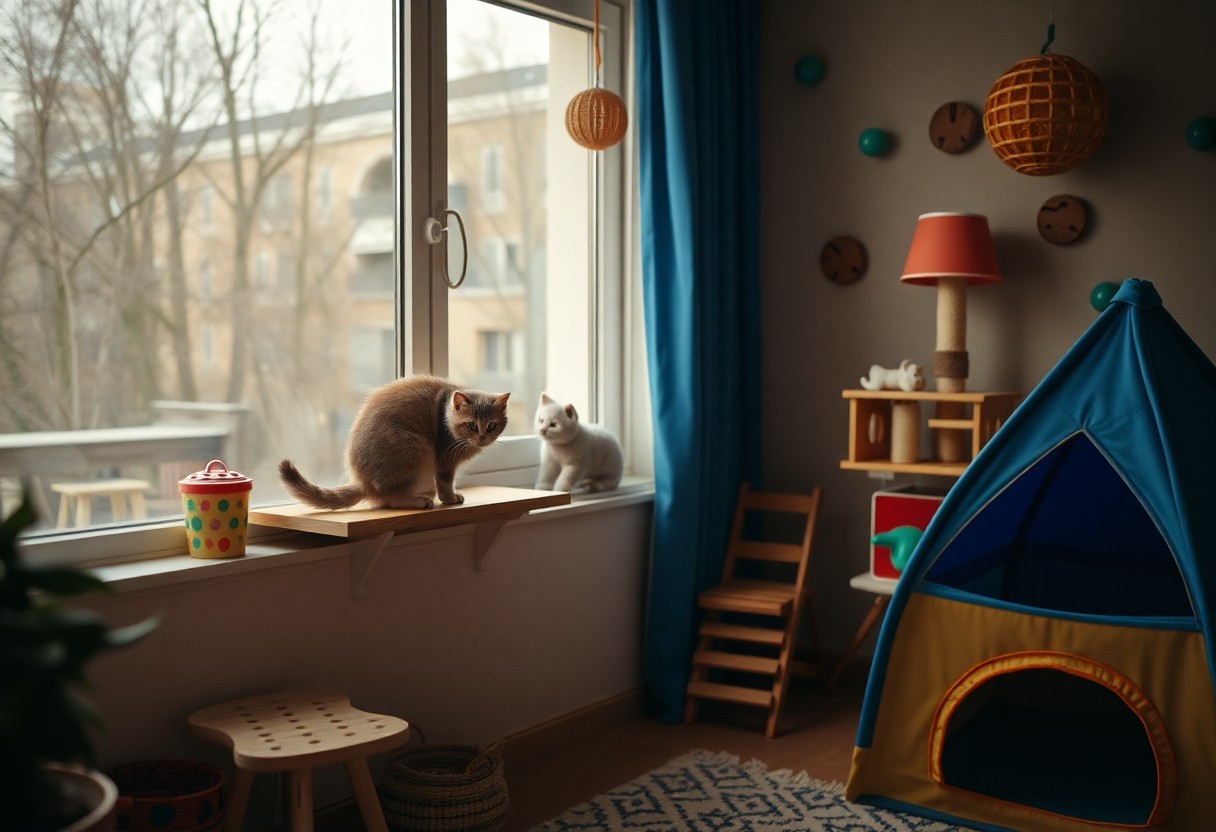
Factors Influencing Indoor Play Preferences
For your shy cat, various factors can significantly impact their indoor play preferences. Understanding these elements can help you tailor activities that cater to their needs. Consider the following:
- Age
- Energy Levels
- Previous Experiences
- Socialization
Recognizing these factors allows you to create a supportive play environment that promotes engagement and joy.
Age and Energy Levels
Preferences in play often depend on your cat’s age and energy levels. Kittens are typically more energetic and playful, requiring stimulating activities that challenge their agility. In contrast, older cats may prefer gentler, less demanding forms of play that suit their energy levels. By observing your cat’s behavior, you can provide appropriate activities that keep them entertained while considering their physical capabilities.
Previous Experiences and Socialization
Factors shaping your cat’s play preferences can be deeply rooted in their past. Previous experiences greatly influence how your cat responds to different stimuli. If your cat has had negative experiences with certain toys or interactions, they might develop a fear of similar situations. Conversely, positive interactions encourage curiosity and engagement. Pay attention to your cat’s reactions and adjust their environment to foster a safe and enjoyable experience.
Influencing your cat’s behavior requires understanding their past socialization. A shy cat may retreat from activities that remind them of unpleasant encounters; hence, gradual exposure to new experiences is vital. Create a safe space where they can explore at their own pace. Additionally, interacting with them during play sessions can build their confidence and cultivate a sense of trust. By ensuring they have a supportive environment, you can help nurture their wellbeing and enhance their indoor play preferences.
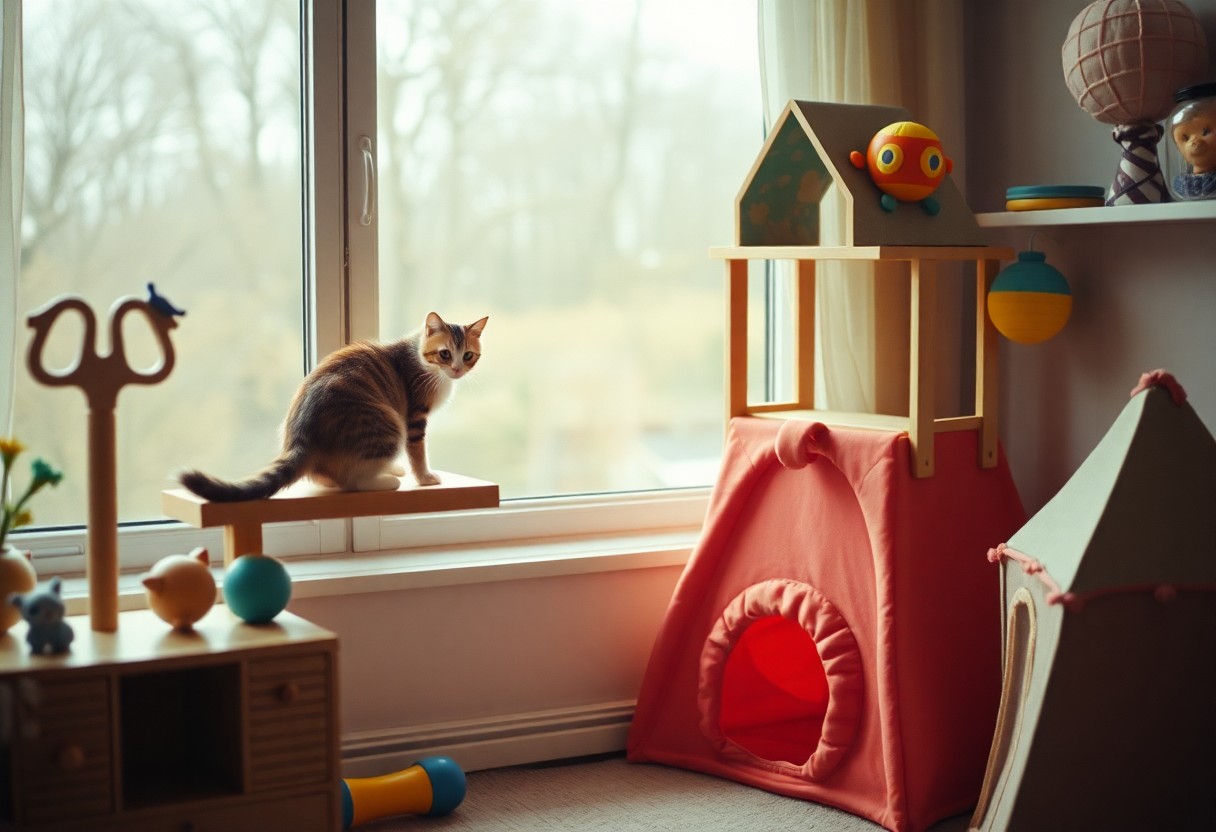
How to Evaluate the Success of Activities
Many pet owners find it imperative to assess how well their chosen activities engage and enrich their shy cats. By evaluating your cat’s response to each activity, you can determine which ones resonate best. Take note of their enthusiasm, energy levels, and overall interaction during these experiences to figure out which activities provide the most engagement and enjoyment for your furry friend.
Observing Changes in Behavior
Even subtle shifts in your cat’s behavior can indicate the effectiveness of an activity. Watch for changes, such as increased playfulness, curiosity, or confidence when trying new things. If your cat becomes more social or comfortable around you, it may signal that the activity is a hit and worth repeating.
Adjusting Activities Based on Feedback
Any signs of disinterest or stress in your cat can guide you in modifying their activities. It’s important to pay attention to their reactions and adapt the experience accordingly. Your cat’s comfort and enjoyment should always remain a priority to ensure they stay engaged.
Success in engaging your shy cat comes from being attentive to their needs and preferences. If you notice your cat reacting negatively, it might be due to the type of activity or the environment. For instance, if an activity causes your cat to hide or become agitated, you should consider shifting focus to something less overwhelming, or modifying the setting to create a more inviting atmosphere. Tailoring your strategies ensures positive experiences and encourages your cat’s development and happiness.
Summing up
Ultimately, discovering unique indoor activities for your shy cat involves understanding their preferences and creating a safe environment that encourages exploration. Experiment with various toys, setups, and games that stimulate their senses while giving them the space they need. Observe your cat’s responses to different activities and adjust your approach accordingly. By fostering a playful atmosphere, you can help your shy feline feel more confident and engaged in their indoor surroundings, ensuring a happier and more stimulating life for them.
FAQ
Q: Why is it important to find unique activities for my shy cat?
A: Finding unique activities for your shy cat is important because it helps to build their confidence and encourages them to explore their environment. Engaging in various activities not only keeps them mentally stimulated but also reduces anxiety and prevents behavioral issues that can arise from boredom. Shy cats benefit greatly from gentle encouragement to play and interact, which can lead to improvements in their overall well-being.
Q: What are some signs that my cat is bored or needs stimulation?
A: Signs that your cat may be bored or in need of stimulation include excessive sleeping, lack of interest in playtime, destructive behavior, or vocalizing more than usual. You might also notice that they are withdrawing from social interactions with you or other pets. If your shy cat is displaying any of these behaviors, it may be time to introduce new and engaging activities to keep them active and entertained.
Q: How can I create a safe exploration space for my shy cat indoors?
A: To create a safe exploration space for your shy cat, start by choosing a quiet area of your home that is free from loud noises and interruptions. Utilize cat trees, tunnels, and hiding spots to provide vertical space and cozy retreats. You can also add interactive toys that stimulate their curiosity without overwhelming them. Ensuring that this space is comfortable, secure, and rich in sensory experiences will encourage your cat to explore at their own pace.
Q: What types of interactive toys are best suited for shy cats?
A: Interactive toys that are suited for shy cats typically include those that engage their natural instincts without overwhelming them. Puzzle feeders, feather wands, and soft plush toys can be excellent choices. Look for toys that allow for quiet play, offer hiding spots, or can be used independently to encourage self-play. Gradually introducing these toys and allowing your cat to explore them on their own terms can help increase their comfort and interest in playtime.
Q: Are there specific activities that help shy cats become more confident?
A: Yes, several activities can help shy cats build their confidence. Slow and controlled play sessions with wand toys can encourage them to engage without feeling threatened. Treat-based training using clickers can also boost their self-esteem, as they learn to associate positive experiences with their environment. Additionally, providing opportunities for supervised exploration in new areas of your home can help them feel more secure and confident as they encounter different surroundings.
